Tools and software
Phone Battery Draining Fast? 7 Powerful Mistakes You’re Probably Making
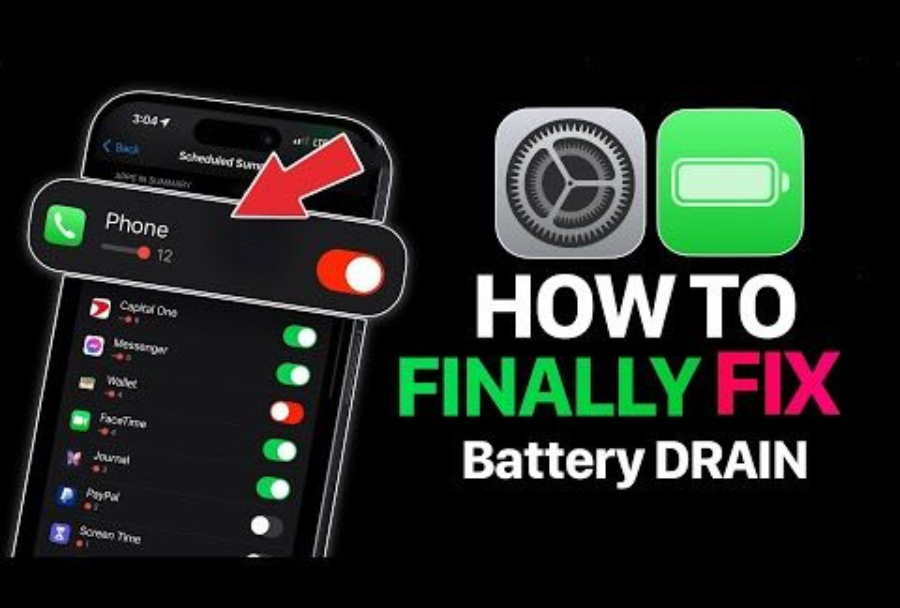
Phone Battery Draining Fast,We live in a time when our entire lives revolve around our smartphones—whether it’s messaging loved ones, capturing photos, navigating with GPS, checking emails, playing games, watching videos, or managing bank accounts. In fact, for many people, a phone is no longer just a communication tool; it’s a personal assistant, an entertainment device, and even a remote office. So, when your phone’s battery starts draining fast, it doesn’t just slow you down—it can feel like your whole digital world is slipping away Phone Battery Draining Fast.
We’ve all been there. You wake up in the morning with 100% battery, use your phone sparingly throughout the day, and by mid-afternoon, you’re already hunting for a charger. Or worse, you charge your phone overnight, only to find it’s already losing juice by breakfast. It’s frustrating, confusing, and for some users, a near-daily annoyance. But what if the problem isn’t the battery itself? What if it’s the way you’re using your phone—or not using it—that’s causing this rapid decline in power Phone Battery Draining Fast.
The truth is, most people unknowingly engage in habits that silently and consistently drain their phone’s battery life. From poorly optimized settings to background apps and misunderstood features, modern smartphones come packed with powerful tools that, when mismanaged, can become power-hungry parasites. Understanding how these elements work together—or against each other—is key to solving the mystery behind your quickly draining battery Phone Battery Draining Fast.
For starters, one of the biggest culprits of battery drain is the screen itself. Today’s smartphones feature high-resolution displays with refresh rates of 90Hz, 120Hz, or even higher. While these make scrolling and visuals buttery smooth, they also consume significantly more power than older displays. Combine that with high screen brightness or automatic brightness settings that ramp up unnecessarily in well-lit environments, and your screen becomes a serious battery killer Phone Battery Draining Fast.
Then there are background apps. Think of apps like Facebook, Instagram, Snapchat, and Google Maps that run silently in the background—even when you’re not actively using them. These apps constantly check for updates, track your location, push notifications, and sync data, draining both your battery and your mobile data. Many users don’t realize how much of a toll these services take until they check their battery usage stats and see these apps listed among the top consumers Phone Battery Draining Fast.
But it’s not just apps—it’s also features. Bluetooth, GPS, Wi-Fi, and even NFC are often left on unnecessarily. While these technologies are incredibly useful, they are also continuous power consumers. For instance, if you leave your GPS on all day, your phone is constantly tracking your location, which can dramatically shorten battery life. Similarly, if your Wi-Fi is constantly scanning for new networks or your Bluetooth is trying to pair with nearby devices, the battery takes a significant hit Phone Battery Draining Fast.
Another common problem? Push notifications and constant syncing. Email apps, social media platforms, and cloud storage services often sync in real-time by default. That means your phone is frequently sending and receiving data even when you’re not actively engaging with it. While this keeps your content fresh and up-to-date, it also forces your phone to work harder behind the scenes, burning through battery faster than necessary Phone Battery Draining Fast.
Many users are also unaware that poor signal strength can be a major battery drainer. When your phone struggles to connect to a weak cellular network, it boosts its power output to maintain a connection. This leads to rapid battery consumption—especially in elevators, basements, rural areas, or any location with poor coverage. If you’re spending a lot of time in such environments, your phone’s battery is probably working overtime just to stay connected Phone Battery Draining Fast.
Let’s not forget about software updates. Outdated operating systems or buggy apps can cause memory leaks, excessive CPU usage, and general instability—all of which put unnecessary strain on the battery. Many users delay system updates thinking they’re optional, when in reality, these updates often include essential battery optimizations and bug fixes. Ignoring them could be hurting your battery health without you even realizing it Phone Battery Draining Fast.
Even the way you charge your phone can play a role. Continuously charging to 100% and letting it drain to 0% can stress the battery over time. Modern lithium-ion batteries thrive when kept between 20% and 80%. Fast charging may be convenient, but it can also generate heat, which is one of the biggest enemies of battery longevity. Likewise, using cheap or off-brand chargers can result in unstable power delivery, causing long-term damage to your battery Phone Battery Draining Fast.
And of course, battery health itself can degrade over time. If your phone is a few years old, its battery may have already lost a significant portion of its original capacity. In such cases, even moderate use can lead to a rapid drain because the battery physically can’t hold as much charge as it once did. This is especially true for users who frequently expose their phones to extreme temperatures or leave them plugged in overnight for years on end Phone Battery Draining Fast.
What’s more surprising is that even features designed to save battery can have the opposite effect if used improperly. For instance, adaptive brightness or battery optimization modes can sometimes behave unpredictably, dimming your screen at the wrong time or closing background apps you actually need. If not configured properly, they may end up causing frustration without truly solving the root problem Phone Battery Draining Fast.
So, what’s the solution? Fortunately, there’s a lot you can do to stop your battery from draining fast—and most of it doesn’t require any technical skills or third-party apps. In this guide, we’re going to walk you through a series of practical, actionable steps that will not only stop your battery from dying quickly but also help extend its overall lifespan. From managing background processes and optimizing system settings to understanding your charging habits and leveraging built-in tools, we’ll show you exactly where your battery life is going—and how to take it back Phone Battery Draining Fast.
Whether you’re using an Android or an iPhone, whether your device is brand new or a few years old, the advice in this article is built to help anyone improve their phone’s battery performance in a noticeable way. We’ll also cover what to do if your battery is draining fast only during certain activities—like gaming or video calls—as well as how to tell whether it’s time for a replacement battery altogether Phone Battery Draining Fast.
It’s time to stop blaming your phone and start changing your habits. After all, a long-lasting battery isn’t just about better hardware—it’s about smarter usage. Let’s dive in and break down exactly what you’ve been doing wrong—and what you can start doing right—so you can get back to enjoying your phone without always worrying about the next charge Phone Battery Draining Fast.
Table of Contents
10 Smart Fixes to Stop Your Phone Battery from Draining Fast
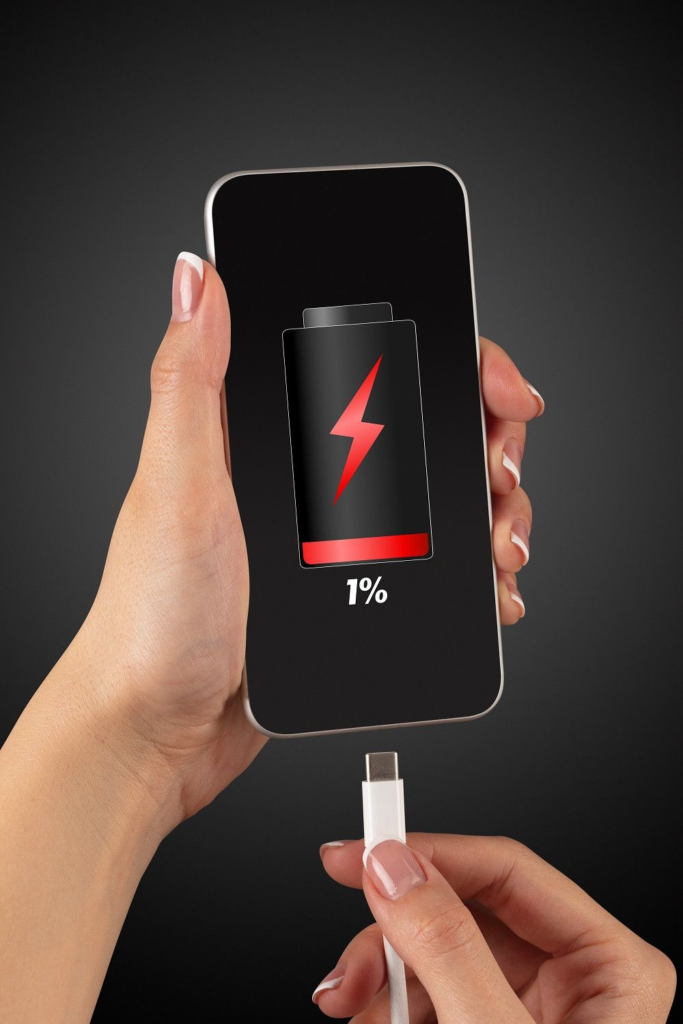
If your phone’s battery is draining faster than it should, don’t panic. These practical fixes can help you reclaim power, boost performance, and extend your device’s life without requiring advanced technical skills Phone Battery Draining Fast.
1. Adjust Your Screen Brightness and Display Settings
Your phone’s display is one of the biggest battery hogs. If you keep brightness levels at maximum all the time, you’re burning through battery unnecessarily. Turn off auto-brightness, and manually reduce the brightness to a comfortable level. Also, go into your display settings and reduce the screen timeout duration to 30 seconds or less. If your phone supports high refresh rates (like 120Hz), consider switching to a lower rate like 60Hz to save power. Similarly, dark mode can significantly reduce power usage on OLED screens, so turn it on system-wide and in apps that support it Phone Battery Draining Fast.
2. Disable Background App Activity
Apps running in the background often drain battery silently. Go to your phone’s settings and check which apps consume the most power. On iOS, navigate to “Battery” under settings to view detailed usage. On Android, go to “Battery Usage” or “Battery & Performance.” Disable background activity for apps you don’t need constantly syncing, like social media, weather, or news apps. You can also enable battery saver or low power mode, which limits background processes automatically vPhone Battery Draining Fast.
3. Turn Off Unused Connectivity Features
Many users leave Wi-Fi, Bluetooth, GPS, mobile hotspot, or NFC on at all times—even when they’re not using them. These features continuously search for signals or devices, which drains battery. Turn them off when not in use, especially GPS and mobile data. Use Airplane Mode in poor signal areas where your phone keeps searching for a connection. This simple habit can add hours of battery life Phone Battery Draining Fast.
4. Update Your Apps and Operating System
App developers constantly release updates to fix bugs and improve battery efficiency. Keeping your apps and operating system up to date ensures you’re getting the most optimized experience. An outdated app or OS can cause background loops, memory leaks, or inefficient processing, which leads to faster drain. Enable auto-updates or regularly check the App Store/Google Play for pending updates Phone Battery Draining Fast.
5. Optimize App Settings for Power Saving
Many apps include settings to reduce power consumption, but these are often hidden by default. For example, you can turn off auto-play videos in apps like Instagram, Facebook, or YouTube, which prevents content from auto-loading as you scroll. In email apps, reduce sync frequency to every 15 or 30 minutes instead of real-time. Disable unnecessary notifications that cause the phone to wake up frequently Phone Battery Draining Fast.
6. Monitor Signal Strength and Use Wi-Fi Where Possible
Poor cellular reception forces your phone to work harder to maintain a connection. If you’re in an area with low signal, your battery will drain much faster. Switch to Wi-Fi whenever possible—especially at home or work. Also, go to settings and disable the “Wi-Fi Scanning” feature which keeps scanning even when Wi-Fi is turned off. In rural or basement areas with consistently poor signal, consider enabling Airplane Mode and just using Wi-Fi to conserve energy Phone Battery Draining Fast.
7. Manage Location Services Wisely
Location tracking is one of the most power-hungry features on smartphones. Many apps request access to your location even when it’s not needed. Go to your location settings and allow access only when using the app. Disable full-time tracking for services like Facebook, Snapchat, or fitness apps unless necessary. Some phones also offer location accuracy modes—choose “Battery Saving” instead of “High Accuracy” for less aggressive tracking Phone Battery Draining Fast.
8. Use Battery Saver or Low Power Mode
Modern smartphones offer built-in power-saving modes that automatically limit background processes, lower screen brightness, and disable visual effects. On Android, it’s called Battery Saver. On iPhone, it’s Low Power Mode. Turn these on manually when you know you’ll be away from a charger for a while. Many phones also allow you to schedule battery saver mode to turn on at a certain percentage, like 20% or 30% Phone Battery Draining Fast.
9. Reduce Notifications and Background Refresh
Push notifications from dozens of apps can cause your phone to wake up constantly. Go through your notification settings and disable alerts from apps that aren’t essential. Additionally, turn off background refresh for apps like mail clients, social networks, and messaging services that you don’t use frequently. This keeps your phone from constantly syncing when you’re not even looking Phone Battery Draining Fast.
10. Watch Out for Battery-Hungry Apps and Malware
Some third-party apps, especially those not downloaded from official app stores, can cause battery drain due to poor coding or hidden malware. Uninstall apps that you don’t recognize or haven’t used in months. If your battery started draining suddenly after installing a specific app, remove it immediately and monitor battery performance. Android users can use tools like Device Care or third-party battery analyzers to track rogue apps Phone Battery Draining Fast.
Phone Battery Drain
Pro Tips to Maximize Your Phone’s Battery Life
Smartphones are an essential part of modern life, but battery drain remains a frustrating issue for many users. While standard fixes like reducing screen brightness or turning off Bluetooth help, there are several pro-level tips that tech-savvy users can use to extend battery life significantly. Here are advanced, real-world-tested strategies to make your phone last longer without compromising on performance Phone Battery Draining Fast.
1. Use Sleep and Deep Sleep Features (Android)
Most Android devices come with the ability to put apps in “Sleep” or “Deep Sleep” mode. This feature restricts background data usage and battery consumption for apps you don’t frequently use Phone Battery Draining Fast.
- Go to Settings > Battery and device care > Battery > Background usage limits.
- Place unused apps into the Deep Sleep category.
This method helps reduce passive battery drain from rarely-used applications.
2. Turn Off Always-On Display (AOD)
Always-On Display may be convenient, but it keeps pixels lit up constantly, consuming power.
- On Android: Settings > Lock screen > Always On Display
- On iPhones with Dynamic Island or OLED screens, minimize background animations.
Turning AOD off can increase overnight battery preservation by 5–10%.
3. Stop Using Live Wallpapers
Animated or live wallpapers require GPU cycles and constant memory access, draining more power than static images.
- Use dark, static images for OLED screens for better energy efficiency.
Live wallpapers may look great, but they quietly reduce battery life across the day.
4. Limit Sync Frequency for Emails and Apps
Email apps, social networks, and cloud services constantly sync in the background.
- Set email to fetch manually or every 30 minutes instead of push.
- Apps like Facebook, WhatsApp, and Instagram can be limited to manual refresh when opened.
This reduces background activity that eats up battery unnecessarily.
5. Avoid Poor Quality Chargers and Cables
Low-quality or knock-off chargers not only charge slowly but also damage your battery over time.
- Always use manufacturer-approved cables.
- For iPhones, look for MFi (Made for iPhone) certified cables.
Cheap accessories might save money short term but hurt your battery health long term.
6. Turn Off Haptics and Keyboard Vibration
Every buzz or vibration uses a small motor that consumes energy.
- Go to Settings > Sound & vibration to reduce or disable haptic feedback.
If you don’t need the phone to vibrate, disabling this can extend battery during long usage days.
7. Avoid Using Phone While Charging
Using heavy apps like games or streaming video during charging increases heat generation, which degrades the battery faster.
- Allow your phone to charge undisturbed, especially if you’re using fast charging.
Heat is the enemy of lithium-ion batteries—protect your device from excessive heat build-up.
8. Disable GPS for Unused Apps
Many apps request location access by default. When allowed to run in the background, they use GPS frequently, draining battery.
- Go to Settings > Location > App permissions and set to “While using the app” or “Deny” as appropriate.
GPS sensors are one of the most power-hungry components. Restricting access leads to noticeable gains.
9. Use Wi-Fi Instead of Mobile Data
Wi-Fi uses less power than 4G/5G mobile data, especially when the signal is strong.
- When indoors or at home, connect to Wi-Fi to reduce radio frequency battery usage.
- Avoid toggling between Wi-Fi and mobile data frequently.
Weak mobile data signal forces your phone to search more often, draining more energy.
10. Use Battery Health Monitoring Apps
There are third-party apps that help you monitor charging habits, discharge cycles, and battery health.
- AccuBattery (Android): Gives battery health stats and estimates remaining life.
- CoconutBattery (iOS via Mac): Shows cycle counts and original capacity.
Using these tools can help optimize your daily usage based on actual performance metrics.
11. Enable Optimized Charging
Modern devices come with adaptive charging that learns your schedule.
- iPhone: Settings > Battery > Battery Health > Optimized Battery Charging
- Android (Samsung/Pixel): Look under Battery settings for adaptive charging options.
This helps avoid keeping the battery at 100% for prolonged periods, which can degrade it faster.
12. Don’t Let Your Battery Drain to Zero Regularly
While older batteries benefited from full discharge cycles, modern lithium-ion batteries last longer when kept between 20%–80%.
- Avoid running your battery below 10% frequently.
- Try to plug in your device before it hits red.
Battery preservation is more about avoiding extremes than calibrating capacity today.
13. Reduce Animation and Transition Effects
Smooth animations look nice but consume GPU power.
- Android: Enable Developer Options and reduce Window animation scale, Transition animation scale, and Animator duration scale to 0.5x or off.
- iOS: Settings > Accessibility > Motion > Reduce Motion
Reducing visual effects improves both performance and battery longevity.
14. Avoid Overcharging Overnight (If Possible)
If your phone doesn’t support adaptive charging, unplugging it once it reaches 100% helps maintain battery health.
- Use smart plugs with timers or battery protection features.
- Place the phone in a cool area to reduce charge heat while sleeping.
Overnight charging isn’t harmful if managed well, but continuous top-up cycles aren’t ideal.
15. Use Battery Saver Mode Proactively
Don’t wait until your phone drops to 15%. Enable battery saver at 40–50% if you know you’ll be away from a charger.
- Android: Settings > Battery > Power Saving Mode
- iOS: Settings > Battery > Low Power Mode
How Apps Affect Battery Drain (and What to Do About It)
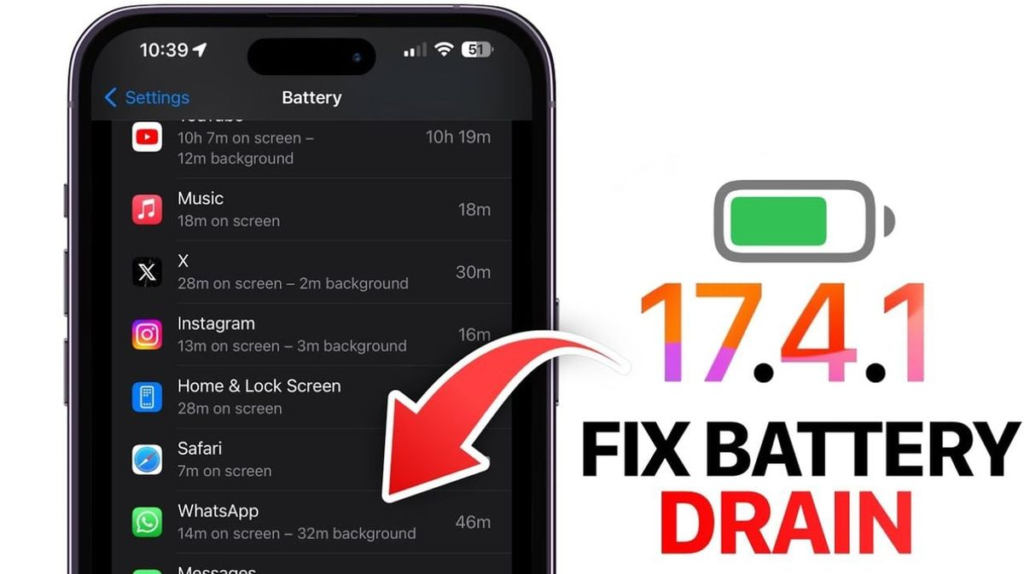
In today’s hyperconnected world, our smartphones are our lifelines—whether for work, entertainment, navigation, or staying in touch. But nothing brings that convenience to a halt faster than a dying battery. You’ve charged your phone overnight, yet by midday, you’re down to 30%. Sound familiar?
One of the biggest culprits behind unexpected battery drain? Apps. Yes, the very programs that make our devices so useful can also be silently sipping (or guzzling) your battery power. But how exactly do apps drain your battery, and more importantly, what can you do about it?
Let’s dive into how apps affect battery life and how you can take control of your device’s energy consumption Phone Battery Draining Fast.
1. How Apps Drain Your Battery
Apps drain battery power in several ways—some obvious, others hidden in the background. Here’s a breakdown Phone Battery Draining Fast:
a. Background Activity
Many apps continue to run even when you’re not using them. They check for updates, sync data, track your location, or send push notifications. Social media, email, and messaging apps are particularly notorious for this.
b. Screen Time and Brightness
Apps that keep your screen active for long periods—such as video streaming, gaming, or reading apps—can drain battery quickly. The brighter your screen, the more power it consumes Phone Battery Draining Fast.
c. Location Services
Apps that use GPS—like maps, ride-sharing apps, or weather apps—consume extra power when tracking your location continuously.
d. High CPU Usage
Some apps are poorly optimized or designed to perform intensive tasks like processing data, animations, or graphics. These apps put stress on your phone’s processor (CPU), leading to rapid battery depletion.
e. Notifications and Alerts
Push notifications light up your screen, vibrate your device, or play sounds—all of which consume energy. Constant pings from news, games, or social apps can chip away at your battery throughout the day.
f. Poor Coding or Bugs
Apps with bad code or unpatched bugs can run into infinite loops, crash frequently, or keep reloading in the background—causing excessive power consumption without obvious symptoms.
2. How to Spot Battery-Hungry Apps
If your battery is draining faster than usual, your first step is to identify which apps are causing the issue.
On Android:
- Go to Settings > Battery > Battery Usage.
- You’ll see a list of apps and their battery consumption.
- Tap on individual apps to see foreground vs. background usage.
On iPhone (iOS):
- Go to Settings > Battery.
- You’ll see a breakdown of app usage over the last 24 hours or 10 days.
- It shows screen time, background activity, and battery percentage used by each app.
Look for apps that use a high percentage of battery but haven’t been actively used by you—that’s a sign they’re working overtime in the background.
3. Common Battery-Draining Apps
While this can vary depending on your habits, certain types of apps tend to be the biggest power hogs:
- Social Media: Facebook, Instagram, Snapchat, TikTok
- Streaming Services: YouTube, Netflix, Spotify
- Navigation & Maps: Google Maps, Waze
- Games: Especially 3D or graphics-intensive ones
- Messaging Apps: WhatsApp, Telegram, Messenger (due to constant syncing)
- News & Widgets: Constant refresh cycles to update headlines or weather
4. How to Stop Apps from Draining Battery
Now that you know what causes battery drain, let’s talk about how to fix it. Here are actionable tips to regain control over your battery life:
a. Restrict Background Activity
Limit apps from running in the background unless absolutely necessary.
- On Android:
Settings > Apps > Select App > Battery > Restrict background activity
Or use Battery Saver Mode to restrict all background apps. - On iPhone:
Settings > General > Background App Refresh > Turn Off (or limit to Wi-Fi only)
b. Turn Off Location Access
Disable GPS access for apps that don’t need it constantly.
- On Android:
Settings > Location > App location permissions - On iPhone:
Settings > Privacy > Location Services
Choose “While Using the App” instead of “Always.”
c. Disable Unnecessary Notifications
Fewer notifications mean less screen-on time and less drain.
- Go to your phone’s Notifications Settings, and disable alerts for non-essential apps like games or promotional offers.
d. Lower Screen Brightness and Timeout
Reduce your screen’s brightness manually or use adaptive brightness. Also, set your screen to turn off after 15–30 seconds of inactivity.
- Settings > Display > Brightness & Sleep Timeout
e. Update Your Apps Regularly
App developers frequently push updates that fix bugs and improve battery efficiency. Make sure your apps and system software are always up to date.
f. Use Lite or Web Versions
Some apps like Facebook, Messenger, and Twitter offer “Lite” versions that are stripped-down and less demanding. Or use the browser version instead of downloading the app at all.
g. Enable Battery Saver Mode
Most phones have a built-in battery-saving mode that automatically limits background activity, animations, and screen brightness to extend battery life.
- Turn it on manually when your battery is low or schedule it to activate at a certain percentage (e.g., 20%).
5. Advanced Tips for Power Users
If you want to go even further, consider these expert-level battery management strategies:
a. Monitor App Permissions
Apps that don’t need access to sensors, Bluetooth, or background data shouldn’t have it.
- Review permissions regularly and deny unnecessary ones.
b. Use Third-Party Battery Monitor Apps
Apps like AccuBattery (Android) can help you analyze battery usage in more depth, including charging patterns, wear level, and battery health over time.
c. Clear Cache and Data
Some apps may accumulate data that causes them to misbehave. Clear cache and app data occasionally to keep things smooth.
- Settings > Apps > Select App > Storage > Clear Cache
d. Uninstall Battery Hogs
If an app is consistently using up too much battery and you don’t rely on it—get rid of it. Chances are there’s a lighter or better-optimized alternative.
6. Don’t Forget About Battery Health
While managing apps is important, battery drain can also stem from degraded battery health—especially on older phones.
- On iPhone:
Settings > Battery > Battery Health & Charging shows maximum capacity. - On Android:
You may need a third-party app or dial code to check health.
If your battery has dropped below 80% capacity, no amount of optimization will give you full-day usage again. A battery replacement might be necessary.
When to Replace Your Battery (and How Much It Costs)
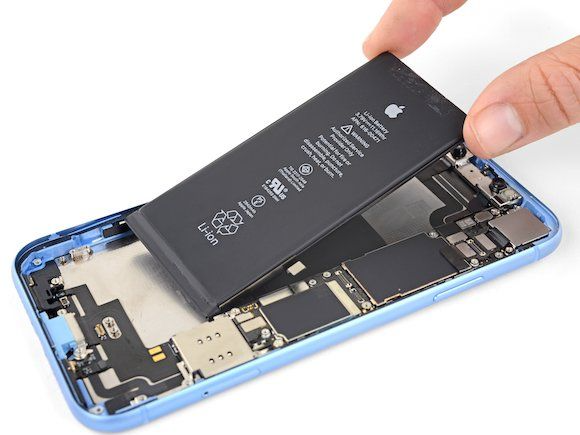
Smartphones, laptops, tablets—even electric cars—are powered by rechargeable batteries. But no matter how advanced your device is, one thing is certain: Phone Battery Draining Fast,the battery will degrade over time. If you’ve noticed your device doesn’t hold a charge like it used to, it might be time to ask: Should I replace my battery? In this guide, we’ll walk you through the signs of battery wear, how to check battery health, when replacement is necessary, and what it typically costs Phone Battery Draining Fast.
Why Batteries Wear Out
Modern rechargeable devices mostly use lithium-ion (Li-ion) or lithium-polymer (Li-Po) batteries. These batteries are powerful, compact, and fast-charging—but they have a limited number of charge cycles (usually around 300 to 1000) Phone Battery Draining Fast.
A charge cycle means using 100% of the battery’s capacity—whether in one go or in multiple smaller recharges. Over time, each cycle wears down the battery’s ability to hold a charge. Eventually, your once all-day battery may last just a few hours Phone Battery Draining Fast.
Signs It’s Time to Replace Your Battery
Here are the most common indicators that your battery is nearing the end of its life Phone Battery Draining Fast.
1. Rapid Battery Drain
If your phone drops from 100% to 30% in just a few hours of moderate use, that’s a red flag. Drastic drops in battery percentage during usage often signal capacity loss Phone Battery Draining Fast.
2. Device Randomly Shuts Off
A weak battery may not supply enough power during demanding tasks like gaming or video calls. This can lead to sudden shutdowns, even with 20–30% battery remaining Phone Battery Draining Fast.
3. Overheating
While it’s normal for phones or laptops to warm up during use, constant overheating—especially while idle or charging—can point to a dying battery Phone Battery Draining Fast.
4. Sluggish Performance
Some devices, like iPhones, throttle performance to protect aging batteries. If your phone feels unusually slow, degraded battery health could be the cause.
5. Bulging or Swollen Battery
A swollen battery is a serious safety issue. If your device’s screen is lifting or the back panel is bulging, stop using it immediately and replace the battery as soon as possible Phone Battery Draining Fast.
6. Battery Health Indicator
Many modern devices allow you to check battery health in the settings:
- iPhone: Go to Settings > Battery > Battery Health & Charging. A capacity below 80% means it’s time for a replacement.
- Android: Some brands offer built-in diagnostics, or you can use apps like AccuBattery or check through dial codes (e.g.,
*#*#4636#*#*). - Laptops (Windows): Use the command prompt to generate a battery report:
powercfg /batteryreport
When Is It Worth Replacing the Battery?
Before spending money, weigh whether a battery replacement is actually worth it.
✅ Yes, Replace It If:
- Your device is in good condition otherwise.
- You rely on it daily and want to avoid buying a new device.
- The cost of the replacement is reasonable.
- You’re environmentally conscious and want to extend the life of your device.
❌ No, Skip It If:
- The device is outdated or sluggish in general.
- It has other major issues (screen damage, camera problems, etc.).
- Replacement cost is too high relative to the device’s current value.
Battery Replacement Costs
Battery replacement costs vary based on the device, brand, and whether you use authorized or third-party repair services.
Smartphones
- Apple (iPhone):
- iPhone 14 and newer: ~$99
- Older models (e.g., iPhone 8 to iPhone 13): ~$69
- AppleCare+ users may be eligible for free replacements.
- Android (Samsung, Google Pixel, etc.):
- Samsung Galaxy: ~$70 to $120
- Google Pixel: ~$70 to $100
- Authorized service may be more expensive but safer.
- Third-Party Repair Shops:
- Often cheaper (~$40 to $80), but warranty and quality vary.
Laptops
- MacBook (Apple):
- MacBook Pro/Air: ~$129 to $199
- AppleCare+ coverage may help.
- Windows Laptops (Dell, HP, Lenovo):
- ~$50 to $150, depending on model and battery type.
- DIY Battery Kits:
- Some tech-savvy users opt for DIY kits (~$20 to $50), but this requires confidence and precision.
Tablets & Wearables
- Tablets like iPads: ~$99 to $150
- Smartwatches (e.g., Apple Watch): ~$80+
Authorized vs. Third-Party Repairs
When replacing a battery, you have two main options:
1. Authorized Service Providers
- Pros: Genuine parts, warranty protection, reliable technicians.
- Cons: More expensive, limited availability in some areas.
2. Third-Party Repair Shops
- Pros: Affordable, fast turnaround.
- Cons: Variable quality, may void manufacturer warranty.
Tip: Always ask about warranty on the replacement battery, whether you go authorized or third-party Phone Battery Draining Fast.
Tips to Prolong Battery Life After Replacement
Once you get a new battery, you’ll want it to last. Here’s how to extend its life:
- Avoid full 0–100% charges daily. Stick to 20–80% when possible.
- Don’t overheat your device—avoid using it under heavy sun or while charging.
- Turn off unnecessary background apps and services.
- Use Battery Saver modes when needed.
- Avoid using fast chargers all the time; slow charging is gentler on batteries.
Best Battery Maintenance Habits for Long-Term Health
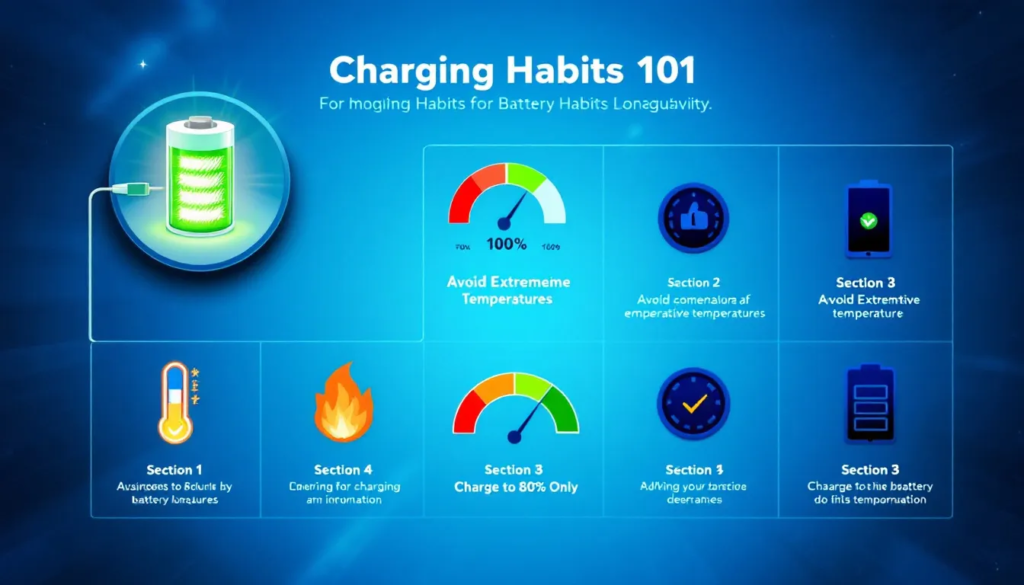
Batteries are the lifeblood of modern portable devices—from smartphones and laptops to tablets, wearables, and even electric cars. But over time, these batteries naturally degrade. While replacement is inevitable eventually, proper care can extend your battery’s life significantly. Phone Battery Draining Fast Developing good battery habits not only ensures your device runs longer each day but also helps maintain performance and reduces the risk of premature failure. Here’s how to keep your battery healthy for the long haul Phone Battery Draining Fast.
1. Avoid Full Discharges—Stay Between 20% and 80%
Contrary to old myths, fully draining your battery to 0% before charging is no longer beneficial—in fact, it’s harmful. Modern lithium-ion batteries (used in phones, laptops, and EVs) degrade faster when consistently charged from 0% to 100% Phone Battery Draining Fast.
Best practice:
Keep your battery between 20% and 80% for daily use. Occasionally charging to 100% is fine, but doing so all the time adds stress to the battery chemistry Phone Battery Draining Fast.
2. Minimize Heat Exposure
Heat is one of the worst enemies of battery health. High temperatures accelerate chemical reactions inside the battery that lead to faster wear and swelling Phone Battery Draining Fast.
Tips to reduce heat exposure:
- Don’t leave your phone or laptop in a hot car or under direct sunlight.
- Avoid using your device while it’s charging—especially for heavy tasks like gaming or video editing.
- Remove your phone case while charging if it traps heat.
Optimal battery temperature:
Keep your device between 15°C and 35°C (59°F–95°F) for best results.
3. Avoid Overnight Charging Every Night
While modern devices are smart enough to stop charging once they hit 100%, keeping the battery plugged in all night regularly can cause trickle charging. This maintains the battery at full capacity, which accelerates degradation over time Phone Battery Draining Fast.
Alternative solutions:
- Unplug when your device hits 80–90%.
- Use a smart plug or charging timer to automatically cut off power after a certain period.
- Enable Battery Optimization or Battery Protection Mode if your device supports it (common on Samsung, ASUS, and some laptops).
4. Use the Right Charger and Cable
Always use a high-quality charger and cable—preferably from the device manufacturer or a certified brand. Cheap or fake chargers may deliver inconsistent voltage and can harm your battery.
Avoid:
- Overly cheap third-party chargers
- Damaged cables or loose ports
- Wireless charging daily (produces more heat than wired charging)
Stick to:
- USB-C PD (Power Delivery) for fast, safe charging
- Manufacturer-recommended wattage for your device
5. Limit Fast Charging When Not Needed
Fast charging is convenient but puts extra stress on your battery. While it’s safe for occasional use, making it your default method can shorten battery lifespan.
Pro Tip:
Use fast charging only when necessary (e.g., before heading out quickly), and stick to normal charging speeds when possible—especially overnight Phone Battery Draining Fast.
6. Avoid Full Disuse for Long Periods
Not using a device for weeks or months? That can be just as harmful as overuse. Lithium-ion batteries can enter a deep discharge state and may not recover if left at 0% for long.
Storage advice:
- Charge the battery to around 50% before turning off.
- Store in a cool, dry place.
- Power it up every few weeks to prevent deep discharge.
7. Enable Built-In Battery Management Tools
Most smartphones, tablets, and laptops now come with built-in tools to manage battery health. These features intelligently limit charging, optimize usage, and extend the overall lifespan.
Examples:
- Apple iPhones/MacBooks: Optimized Battery Charging
- Samsung Galaxy Devices: Protect Battery (limits max charge to 85%)
- Windows Laptops: Battery Saver and battery health report (
powercfg /batteryreport)
Take advantage of these settings—they’re specifically designed to protect long-term battery health.
8. Reduce Background Activity and Screen Brightness
Running many apps or services in the background can force your device to work harder, heat up more, and drain the battery faster—leading to more charge cycles.
To reduce battery stress:
- Lower your screen brightness or enable auto-brightness.
- Close unused apps and tabs.
- Turn off features like Bluetooth, GPS, and Wi-Fi when not in use.
- Enable Battery Saver or Low Power Mode when you need to stretch usage.
9. Don’t Obsess Over Calibration
Older batteries sometimes required full discharges to “calibrate” the battery indicator. With lithium-ion batteries, this is no longer necessary. In fact, it’s harmful to let your battery hit 0% often Phone Battery Draining Fast.
If your battery percentage display seems off, a soft calibration (fully charge, then drain to 10%, then recharge) once every few months is fine—but it shouldn’t be a routine practice Phone Battery Draining Fast.
10. Replace the Battery When It’s Time
No battery lasts forever. When you notice severe capacity drops, overheating, or random shutdowns—especially after 2–3 years of use—it might be time to replace the battery.
Battery health check examples:
- iPhone: Settings > Battery > Battery Health
- Android: Use apps like AccuBattery
- Laptops: Check battery wear level in the system settings or via command prompt tools
Battery Monitoring Tools and Apps: How to Keep Your Device Power in Check
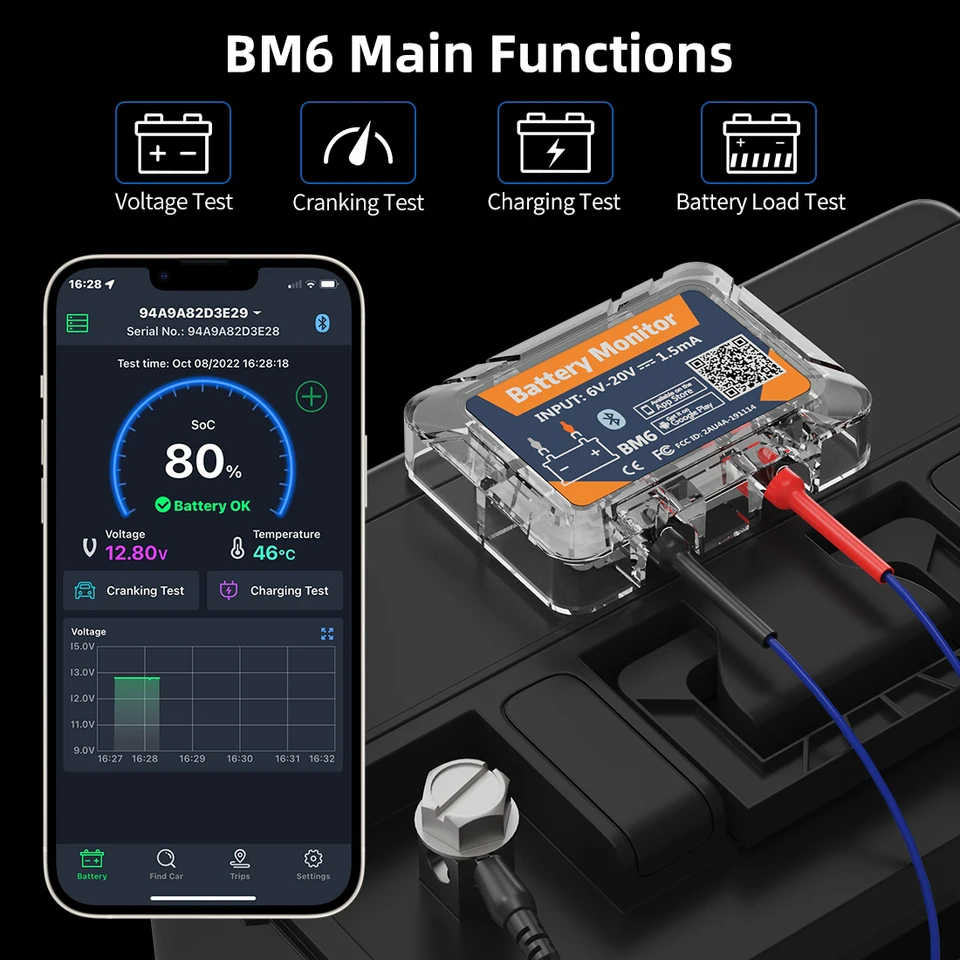
Modern devices rely heavily on battery performance, yet most users don’t keep a close eye on battery health until problems arise—like sudden shutdowns, overheating, or fast-draining power. That’s where battery monitoring tools and apps come in. These tools help users track battery usage, health, and temperature, detect problems early, and optimize performance. Whether you’re using a smartphone, tablet, or laptop, monitoring your battery is a smart step toward prolonging its lifespan and preventing costly replacements Phone Battery Draining Fast.
Let’s explore some of the most effective battery monitoring tools and apps for various platforms and how they help you take better control of your device’s power Phone Battery Draining Fast.
Why Use Battery Monitoring Tools?
Battery monitoring tools offer several benefits:
- Real-time tracking of battery percentage, temperature, voltage, and current draw
- Analysis of charge/discharge cycles and screen-on time
- Health reports that indicate battery wear level or degradation over time
- App usage insights to identify power-hungry apps
- Charging behavior monitoring, such as charging speed, duration, and efficiency
Whether you’re a casual user or a power user, these tools can help you understand how your habits affect battery health and make adjustments for better longevity Phone Battery Draining Fast.
Top Battery Monitoring Apps for Smartphones
1. AccuBattery (Android)
AccuBattery is one of the most popular Android apps for battery monitoring. It provides detailed statistics on:
- Battery charge/discharge rate
- Estimated capacity vs. design capacity
- Charge cycles and charging speed
- App consumption and screen-on time
It also recommends stopping charging at 80% to extend battery life and alerts you if your device overheats during use or charging Phone Battery Draining Fast.
2. Battery Guru (Android)
Battery Guru is designed for more advanced users. It offers:
- Real-time mAh consumption tracking
- Charging limits and alarm settings
- Health statistics and charge cycle estimations
- Temperature and voltage tracking
It’s ideal for users who want more control and insight into their battery’s condition.
3. CoconutBattery (macOS + iOS via USB)
CoconutBattery is a well-known app for Mac users. It displays:
- Current charge and design capacity
- Battery age and number of charge cycles
- iOS device battery health (when connected to Mac)
- Temperature and charging power
It’s lightweight, accurate, and great for checking your iPhone battery from your Mac Phone Battery Draining Fast.
4. iOS Built-in Battery Health (iPhone)
Apple includes basic battery monitoring under:
Settings > Battery > Battery Health & Charging
This section shows:
- Maximum battery capacity
- Peak performance capability
- Recommendations when service is needed
Although not as detailed as third-party apps, it’s sufficient for average users.
Best Battery Monitoring Tools for Laptops
1. BatteryInfoView (Windows)
This free utility from NirSoft provides:
- Battery name, manufacturer, and chemistry
- Full charge capacity vs. design capacity
- Charge/discharge rate
- Wear level and charge cycle count
It’s portable and doesn’t require installation—perfect for tech-savvy users who want a quick snapshot of their laptop’s battery health.
2. BatteryMon (Windows)
BatteryMon is a graph-based tool that tracks:
- Battery status over time
- Discharge/charge rate in real-time
- Historical trends and logs
It’s useful for long-term monitoring and diagnostics, especially for aging batteries.
3. macOS System Report
Mac users can find battery health under:
Apple Menu > About This Mac > System Report > Power
Here, you’ll see:
- Cycle count
- Full charge capacity
- Battery condition (Normal, Replace Soon, etc.)
This built-in tool is technical but provides accurate battery health data.
Key Metrics to Monitor
When using battery tools, keep an eye on:
- Battery health (% of original capacity)
- Cycle count (most batteries last 300–500 cycles before degrading significantly)
- Temperature (keep it below 95°F / 35°C when possible)
- Charging speed and voltage (especially for fast-charging devices)
These metrics will help you identify early signs of degradation and adjust habits accordingly.
Watch: Fix Your Fast-Draining Phone Battery – Step-by-Step Guide
Tired of charging your phone multiple times a day? This video breaks down the most common mistakes users make that lead to battery drain — and exactly how to fix them. From adjusting settings to removing rogue apps, you’ll learn practical tips that actually work Phone Battery Draining Fast.
FAQs About Phone Battery Draining Fast – Here’s What You’re Doing Wrong
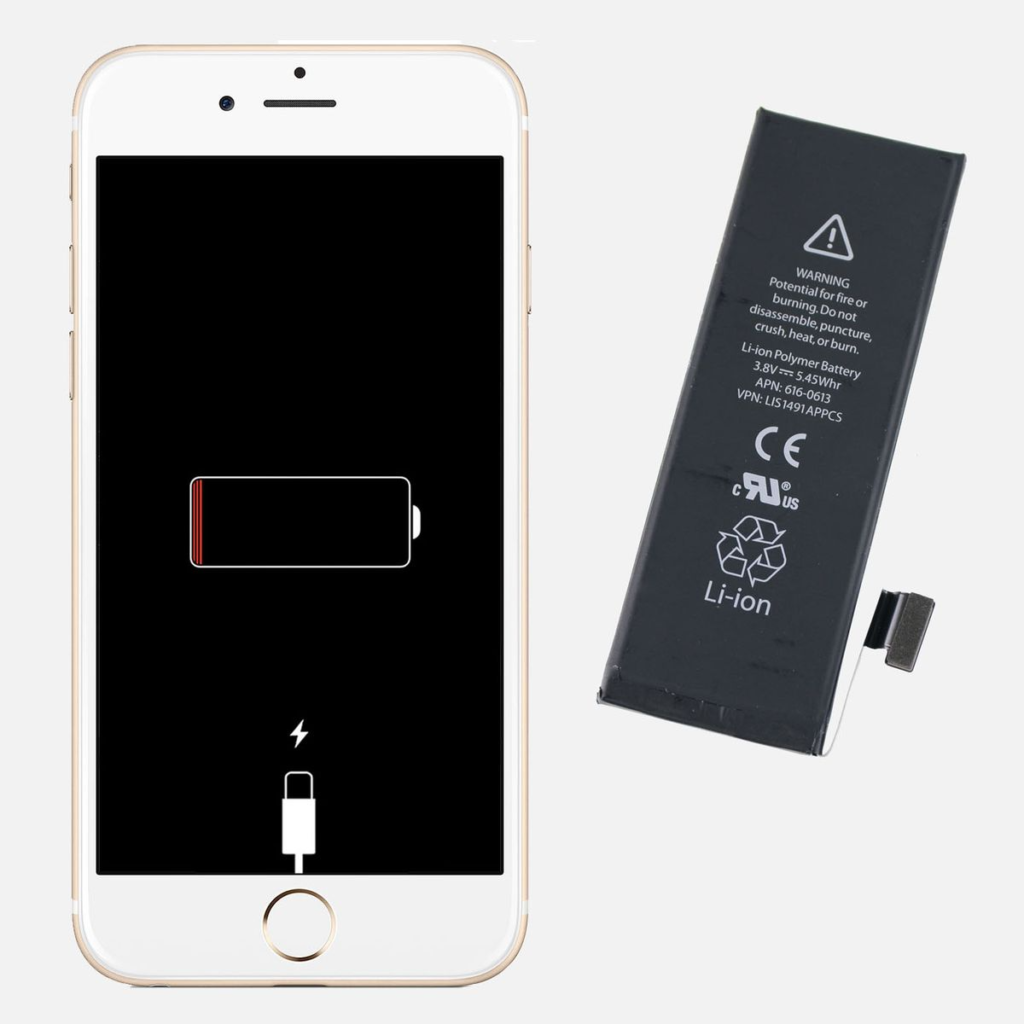
Q1. Why is my phone battery draining so quickly all of a sudden?
A sudden drop in battery life is often caused by a rogue app running in the background, a recent software update, screen brightness set too high, or poor network signal. It could also be due to background syncing or location services staying on constantly Phone Battery Draining Fast.
Q2. How can I tell which app is draining my battery?
You can check battery usage in your phone’s settings.
- On Android: Go to Settings > Battery > Battery usage
- On iPhone: Go to Settings > Battery, then scroll down to see which apps are using the most power.
Q3. Does keeping Wi-Fi, Bluetooth, or GPS on drain the battery?
Yes, keeping Wi-Fi, Bluetooth, or GPS active when not in use can lead to unnecessary battery drain. It’s best to turn them off when you don’t need them Phone Battery Draining Fast.
Q4. Does closing background apps help improve battery life?
Not always. Modern smartphones are optimized to handle background apps efficiently. Force closing them frequently can actually use more battery. Instead, disable battery-draining background processes or restrict app permissions Phone Battery Draining Fast.
Q5. Can a software update affect battery performance?
Yes, some updates might temporarily reduce battery life as your phone re-indexes data and adjusts to new features. However, they usually stabilize after a few days. If not, a factory reset or further updates may be required Phone Battery Draining Fast.
Q6. Is it bad to use the phone while it’s charging?
Using your phone while charging can generate heat, which may degrade the battery over time. Occasional use is okay, but avoid heavy gaming or streaming during charging Phone Battery Draining Fast
Q7. Why does my battery drain fast overnight?
Background app refresh, auto-updates, syncing emails, push notifications, or poor signal reception can cause battery drain overnight. Try enabling Airplane Mode or Battery Saver at night to reduce loss Phone Battery Draining Fast.
Q8. How does screen brightness affect battery life?
High screen brightness is one of the top battery drainers. Lowering brightness or using adaptive brightness settings can significantly improve battery performance Phone Battery Draining Fast.
Q9. Can live wallpapers or widgets drain battery?
Yes, live wallpapers and widgets that refresh frequently (like weather or news widgets) consume more power. Consider using static wallpapers and removing unnecessary widgets Phone Battery Draining Fast.
Q10. When should I consider replacing my phone battery?
If your phone shuts down unexpectedly, doesn’t hold charge, or the battery health (on iPhone or via battery apps on Android) shows below 80%, it might be time to replace the battery Phone Battery Draining Fast.







